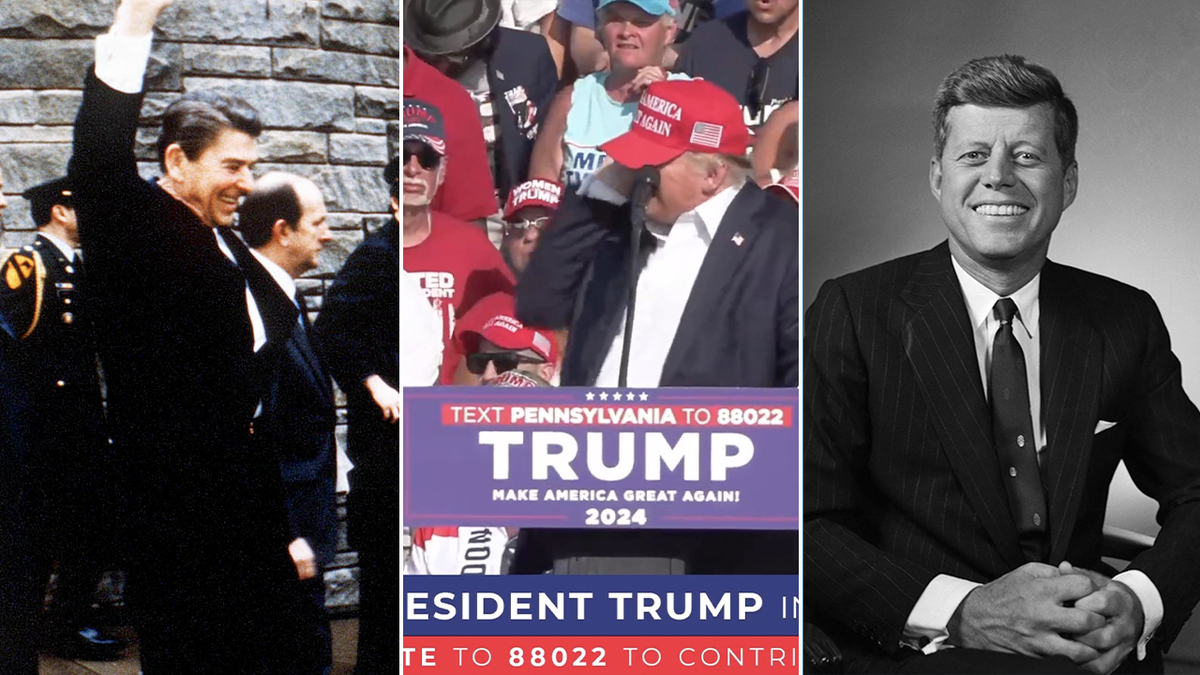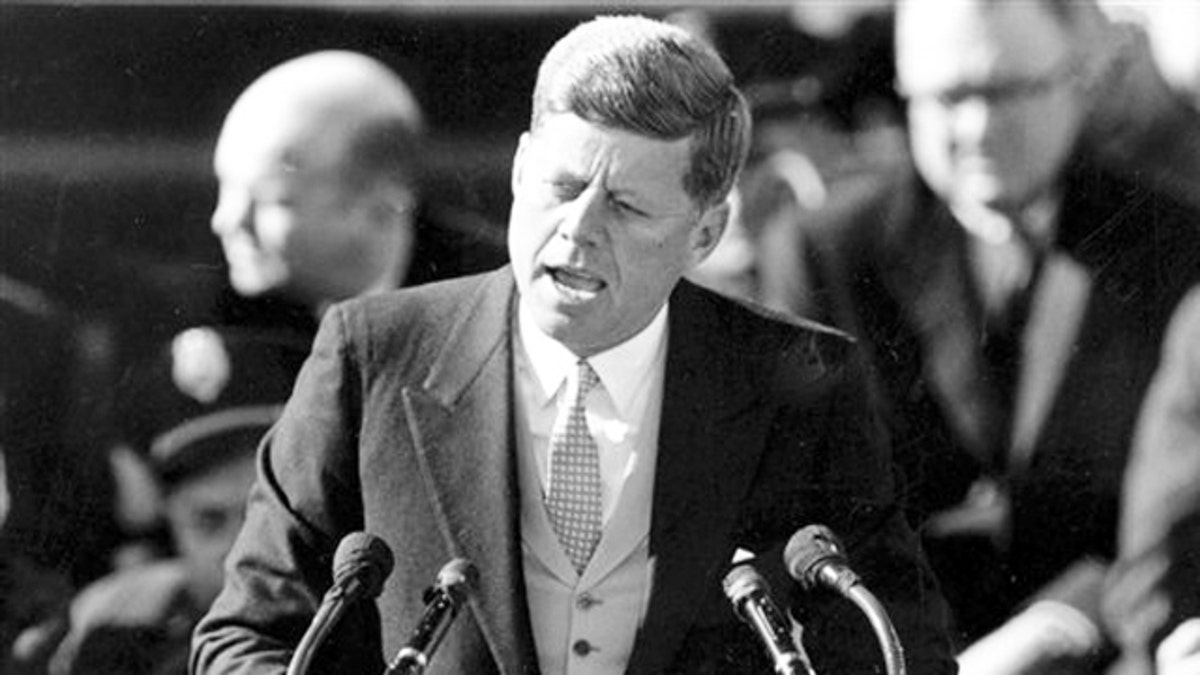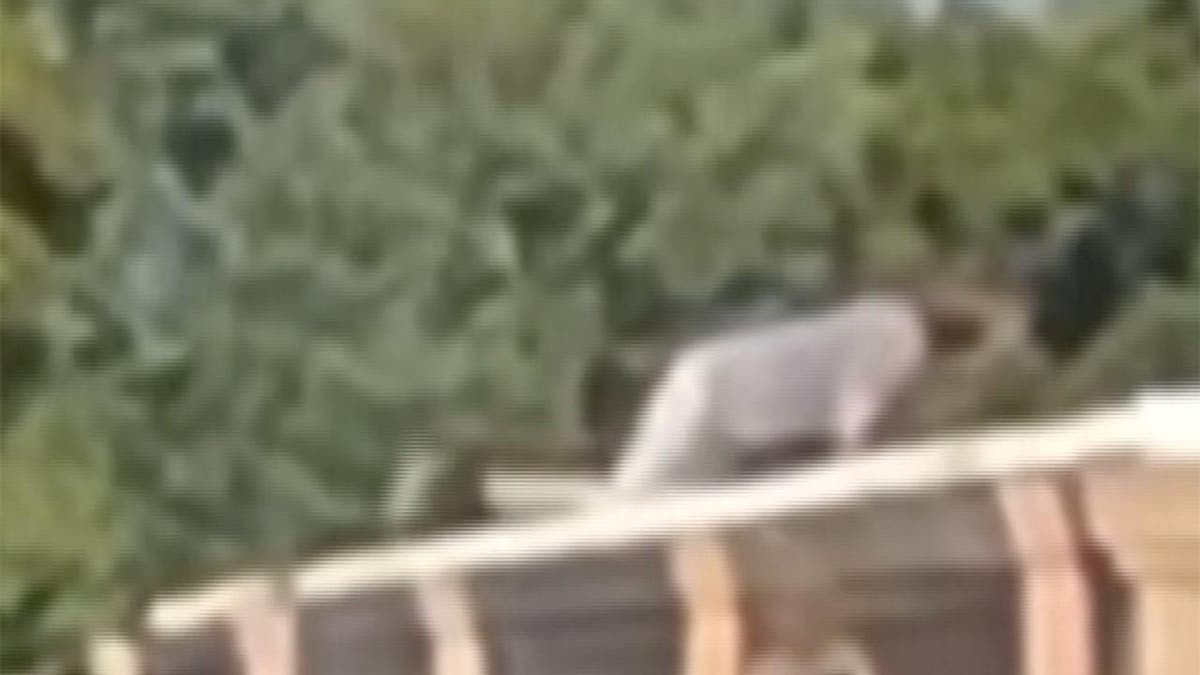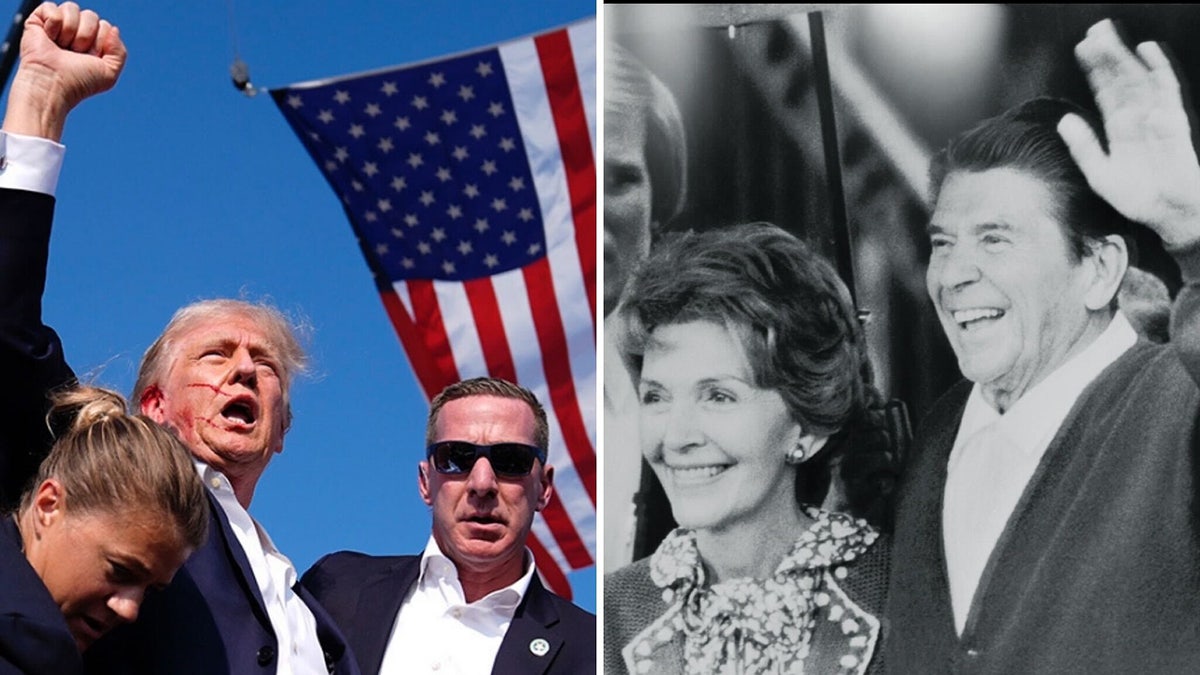Assassination expert says Trump had ‘triple the Secret Service’ JFK had and still came an inch from death
A political scientist and expert on political assassinations pointed out major similarities between the attempted killing of former President Trump and the infamous presidential assassinations of the 20th century, focusing in particular on the fact that major security failures led to each of the traumatic incidents.
Dr. Larry Sabato, the author of “The Kennedy Half Century: The Presidency, Assassination, and Lasting Legacy of John F. Kennedy,” told Fox News Digital this week that just like in the assassinations of John F. Kennedy and Robert F. Kennedy – as well as the President Reagan assassination attempt – a troubled young man was able to game “serious” security vulnerabilities and get a clear shot at a U.S. leader.
“By my count, Trump had perhaps triple the Secret Service personnel that JFK had,” the professor said, hinting at the scale of the security failures that almost led to Trump’s death last weekend.
A 20-year-old suspected gunman named Thomas Crooks fired an AR-15-style rifle at the former president during his 2024 campaign rally in Pennsylvania last Saturday, hitting Trump in the right ear and narrowly missing his head. Two others were seriously wounded, and Trump supporter Corey Comperatore was killed while protecting his family.

Three former presidents who were targets for assassination in modern American history. (Michael Evans/CNP/Contributor | Anadolu/Contributor | Bettmann/Contributor)
Secret Service protecting Trump returned fire, killing Crooks seconds after he opened fire.
As more details emerged about the shooting, law enforcement disclosed that Crooks had taken the shots while lying prone on a roof only a little more than 150 yards away. Questions arose as to how the gunman could have such a clear vantage point in broad daylight of Trump, and at such a close distance. U.S. Secret Service Director Kimberly Cheatle has been under fire for the alleged security failures that occurred that weekend.
Sabato, who is also the director of the University of Virginia’s Center for Politics, told Fox this week that such security failures have characterized presidential assassinations in the U.S., particularly in both Kennedy assassinations in 1963 and 1968, and the attempted Reagan assassination in 1981.
“Protective services were inadequate in all cases,” the professor stated. “For JFK, the open unguarded windows in the Texas School Book Depository Building are obvious. And JFK’s motorcade passed tens of thousands of unscreened people and territory. That was standard back then.”
President Kennedy was slain in Dallas in 1963 by Lee Harvey Oswald, and his death remains the subject of intense investigation and conspiracy theories to this day.
Sabato continued, explaining how Robert Kennedy handled security before he was assassinated in 1968 by pro-Palestinian activist Sirhan Sirhan. The younger Kennedy, then a U.S. Senator representing New York, was killed in Los Angeles the night he won the California Democratic primary.

President John F. Kennedy was assassinated by Lee Harvey Oswald in 1963 while visiting Dallas. (Associated Press)
“RFK used friends such as Rosie Greer as bodyguards (he was right there with RFK when he was assassinated) but the Secret Service did not protect presidential candidates in that time. RFK’s death changed that, but the protection was thin compared to today.”
As Sabato said, Congress authorized the Secret Service to protect “major presidential and vice presidential candidates and nominees” in 1968, following RFK’s assassination. It’s also worth noting that Secret Service protection was extended to former presidents like Trump three years prior.
The UVA professor also detailed the hole in security that was exploited by John Hinckley Jr., when he tried to assassinate Reagan in Washington, D.C., in 1981.
“Reagan was well protected but the people standing with the press pool to Reagan’s left were not checked, allowing Hinckley to get close for the few yards when Reagan was exposed between the Hilton and the Beast,” Sabato recounted, referring to the secured presidential state car. Reagan was seriously wounded in the shooting but survived. Several others were hit as well, including press secretary James Brady, who was partially paralyzed and eventually died of his injuries in 2014.
Sabato noted that Trump had more security than previous high-profile victims, but they still overlooked a “serious vulnerability.”
“We all know the basic story of last Saturday, though the explanations so far are inadequate. By my count, Trump had perhaps triple the Secret Service personnel that JFK had, plus sharpshooters which were rarely employed in the 1960s,” he said.
“Yet they failed to cover one serious vulnerability,” he said, alluding to no one covering the rooftop where the shooter was.
FBI HAS GAINED ACCESS TO THOMAS MATTHEW CROOKS’ PHONE IN TRUMP ASSASSINATION ATTEMPT

Blurry cellphone video shows a rallygoer’s perspective of Thomas Matthew Crooks crawling on a roof moments before he attempted to assassinate former President Donald Trump. (DJ Laughery)
Sabato did acknowledge that it’s impossible for security to get everything perfect.
He said, “Kennedy said more than once that if a would-be assassin was willing to give up his life in order to shoot the president, it would be difficult to stop them.”
All the assassins or attempted killers in these more historically recent cases, he noted, appeared to be “troubled young men who were loners.”
According to Crooks’ schoolmates, the attempted assassin seems to fit into the “loner” and “troubled young men” category. Jason Kohler, who attended the same high school as Crooks, described him to Fox News as an “outcast” who was always alone and “bullied every day.”
Sabato also noted that conspiracy theories predictably followed Trump’s shooting, much like they did after President Kennedy’s murder. However, because of the prevalence of social media, he noted they are now spreading faster than ever.
Lastly, Fox asked Sabato about the lingering social and cultural effects in America if the attempted assassination of Trump was successful.
“Every assassination of a political figure in U.S. history has created shock waves and ripples for years to come,” he replied, He mentioned that if the assassin had been successful, “there would be many consequences,” namely that Trump supporters would have become more distrustful of the government than many already are.
“I think it would have deepened the suspicions and cynicism among Trump’s millions of followers. Few would be inclined to believe the lone-gunman explanation. Does anybody think we need more suspicion and cynicism in American society? I certainly don’t.”

Donald Trump reacts after being shot on the campaign trail in Butler, Pennsylvania, July 13, 2024. First lady Nancy and President Ronald Reagan great supporters as the president leaves the Washington, D.C. hospital where he spent 13 days in March 1981 after being shot during an assassination attempt. (AP photo/Evan Vucci and Getty Images)

